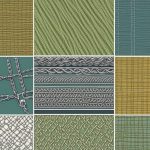Types Of Jasper
Jasper is a type of chalcedony, which is a mineral in the quartz family. It is an opaque stone with a wide range of colors and patterns, making it a popular choice for jewelry and decorative objects. There are many different types and varieties of jasper, each with its own unique characteristics and properties.
Some of the most popular types of jasper include red jasper, picture jasper, and brecciated jasper. Red jasper is a deep red stone that is often used for protection and grounding. Picture jasper is a type of jasper that has unique scenic patterns and is often used for meditation and visualization. Brecciated jasper is a type of jasper that is made up of fragments of other rocks and minerals, giving it a unique appearance.
Jasper has a long history of use in human culture and has been used for everything from tools and weapons to jewelry and decorative objects. It is believed to have many healing properties and is often used in alternative medicine practices. Today, jasper is still a popular stone for jewelry and collecting, and is prized for its unique beauty and properties.
Key Takeaways
- Jasper is a type of chalcedony mineral in the quartz family.
- There are many types and varieties of jasper, each with its own unique characteristics and properties.
- Jasper has a long history of use in human culture and is still popular today for jewelry and collecting.
Types and Varieties of Jasper

Jasper is a form of chalcedony, a mineral that is composed of microscopic crystals. It is a beautiful and versatile gemstone that is available in a wide range of colors, patterns, and varieties. In this section, we will explore some of the most popular types and varieties of jasper.
Ocean Jasper
Ocean jasper is a type of jasper that is found only in Madagascar. It is known for its unique and vibrant colors, which range from green and blue to pink and yellow. Ocean jasper is also characterized by its orbicular patterns, which give it a distinctive and eye-catching appearance. This type of jasper is believed to have a calming and soothing energy, making it a popular choice for meditation and spiritual practices.
Red Jasper
Red jasper is the most common type of jasper, and it is found all over the world. It is characterized by its deep red color, which is caused by the presence of iron oxide. Red jasper is believed to have a grounding and stabilizing energy, making it a popular choice for those who are seeking balance and stability in their lives.
Picture Jasper
Picture jasper is a type of jasper that is known for its unique and intricate patterns. It is often used in jewelry and decorative objects because of its beautiful and distinctive appearance. Picture jasper is believed to have a nurturing and protective energy, making it a popular choice for those who are seeking comfort and security.
Mookaite Jasper
Mookaite jasper is a type of jasper that is found only in Western Australia. It is known for its vibrant and earthy colors, which range from red and yellow to brown and white. Mookaite jasper is also characterized by its unique and intricate patterns, which give it a distinctive and eye-catching appearance. This type of jasper is believed to have a grounding and stabilizing energy, making it a popular choice for those who are seeking balance and stability in their lives.
Imperial Jasper
Imperial jasper is a type of jasper that is found only in Mexico. It is known for its beautiful and vibrant colors, which range from green and blue to purple and pink. Imperial jasper is also characterized by its unique and intricate patterns, which give it a distinctive and eye-catching appearance. This type of jasper is believed to have a nurturing and protective energy, making it a popular choice for those who are seeking comfort and security.
Overall, jasper is a versatile and beautiful gemstone that is available in a wide range of colors, patterns, and varieties. Whether you are seeking balance and stability, comfort and security, or simply a beautiful and unique piece of jewelry, there is a type of jasper that is perfect for you.
Physical and Optical Properties
Color and Pattern
Jasper is a type of chalcedony, which is a mineral in the quartz family. It is usually opaque and comes in a wide variety of colors and patterns. Some of the most common colors include red, green, blue, black, white, yellow, and gray. The color of jasper is determined by the impurities present in the mineral. For example, red jasper gets its color from iron oxide, while green jasper gets its color from chlorite or hornblende.
Jasper also comes in a variety of patterns, including striped, spotted, and mottled. These patterns are created by the way the mineral forms in the earth’s crust and the impurities that are present in the mineral.
Hardness and Fracture
Jasper has a hardness of 6.5-7 on the Mohs scale, making it a fairly hard and durable mineral. It has a conchoidal fracture, which means that it breaks with smooth, curved surfaces. This type of fracture is similar to the way that glass breaks.
Luster and Transparency
Jasper is usually opaque, which means that light does not pass through it. However, some varieties of jasper, such as yellow jasper, can be translucent. Jasper has a waxy or dull luster, which means that it does not reflect light very well.
In conclusion, jasper is a beautiful and durable mineral that comes in a wide variety of colors and patterns. It has a hardness of 6.5-7 on the Mohs scale and a conchoidal fracture. Jasper is usually opaque and has a waxy or dull luster, but some varieties can be translucent.
Geological Formation
Jasper is a type of chalcedony that is formed from a combination of sedimentary, volcanic, and metamorphic processes. The formation of Jasper is a complex process that involves the deposition of fine-grained sediments, volcanic ash, and other materials over millions of years.
Sedimentary Origins
Jasper is often formed from the deposition of clay and other sediments that accumulate in shallow marine or lacustrine environments. Over time, these sediments are compacted and cemented together to form a fine-grained rock known as mudstone. If the mudstone contains a high concentration of silica, it can undergo a process of diagenesis, where the silica is recrystallized into chalcedony. If the chalcedony contains bands of different colors, it is referred to as banded Jasper.
Volcanic and Metamorphic Influence
Jasper can also be formed from the consolidation of volcanic ash and other materials that are ejected from a volcano during an eruption. When these materials settle on the ground, they are compacted and cemented together to form a rock known as tuff. If the tuff contains a high concentration of silica, it can undergo a process of diagenesis, where the silica is recrystallized into chalcedony. If the chalcedony is mixed with other minerals, it can form a rock known as breccia Jasper.
Jasper can also be formed through metamorphic processes, where existing rocks are subjected to intense heat and pressure. When rocks such as basalt or rhyolite are subjected to these conditions, they can undergo a process of recrystallization, where the minerals in the rock are rearranged and reoriented. If the recrystallized minerals include chalcedony, it can form a rock known as cryptocrystalline Jasper.
In conclusion, Jasper is a fascinating type of chalcedony that is formed through a combination of sedimentary, volcanic, and metamorphic processes. Its unique colors and patterns make it a popular choice for jewelry and decorative objects.
Historical Significance and Lore
Ancient Use and Mythology
Jasper has been used for centuries by various cultures for its healing properties and as a protective talisman. Ancient Egyptians believed that jasper could help with fertility and protect against evil spirits. In ancient Greece, jasper was thought to bring rain and was used as a talisman for travelers. Native Americans used jasper for protection during journeys to the spirit world.
Jasper has also been used in mythology. In Norse mythology, jasper was believed to be the blood of the goddess Freyja. In Hindu mythology, jasper was associated with the god Vishnu and was believed to bring love and happiness.
Modern Appreciation
In modern times, jasper is still appreciated for its beauty and healing properties. It is often used in jewelry and home decor. Jasper is known as the supreme nurturer, as it is believed to provide comfort and support during times of stress and illness.
Jasper is also believed to have healing properties. It is said to help with digestion, circulation, and the immune system. Jasper is also believed to help with emotional healing, providing comfort and support during times of grief and trauma.
Overall, jasper has a rich history and mythology, and is still appreciated today for its beauty and healing properties.
Jasper in Jewelry and Collecting
Jasper is a popular gemstone used in the jewelry industry, and collectors are always on the lookout for rare and unique varieties. In this section, we will discuss the gemstone quality and sources of Jasper, as well as the collectible varieties and rarity.
Gemstone Quality and Sources
Jasper is a type of chalcedony, a mineral that is a form of quartz. It is found in many locations around the world, including Australia, Madagascar, India, Brazil, Egypt, the United States, and Indonesia. The quality of Jasper varies depending on the location it is sourced from. Australian Jasper, for example, is known for its vibrant colors and unique patterns, while Indonesian Jasper is prized for its affordability.
When it comes to gemstone quality, the most important factors to consider are the color, pattern, and clarity of the stone. Red Jasper is the most common type of Jasper, and it is known for its deep red color and swirling patterns. Other popular varieties include Ocean Jasper, which features a range of colors and patterns, and Picture Jasper, which has a unique landscape-like pattern.
Collectible Varieties and Rarity
Collectors of Jasper are always on the lookout for rare and unique varieties. Some of the most collectible varieties include Biggs Jasper, which is sourced from Oregon in the United States, and Imperial Jasper, which is found in Mexico. These varieties are prized for their unique patterns and colors, as well as their rarity.
In addition to these rare varieties, there are also many affordable options for collectors. Cobra Jasper, for example, is a type of Jasper that is made of shells or coral embedded in sedimentary rocks. It is known for its distinctive patterns, making each specimen unique.
Overall, Jasper is a versatile gemstone that is perfect for both jewelry and collecting. With its wide range of colors and patterns, there is sure to be a variety of Jasper that appeals to everyone’s taste.






